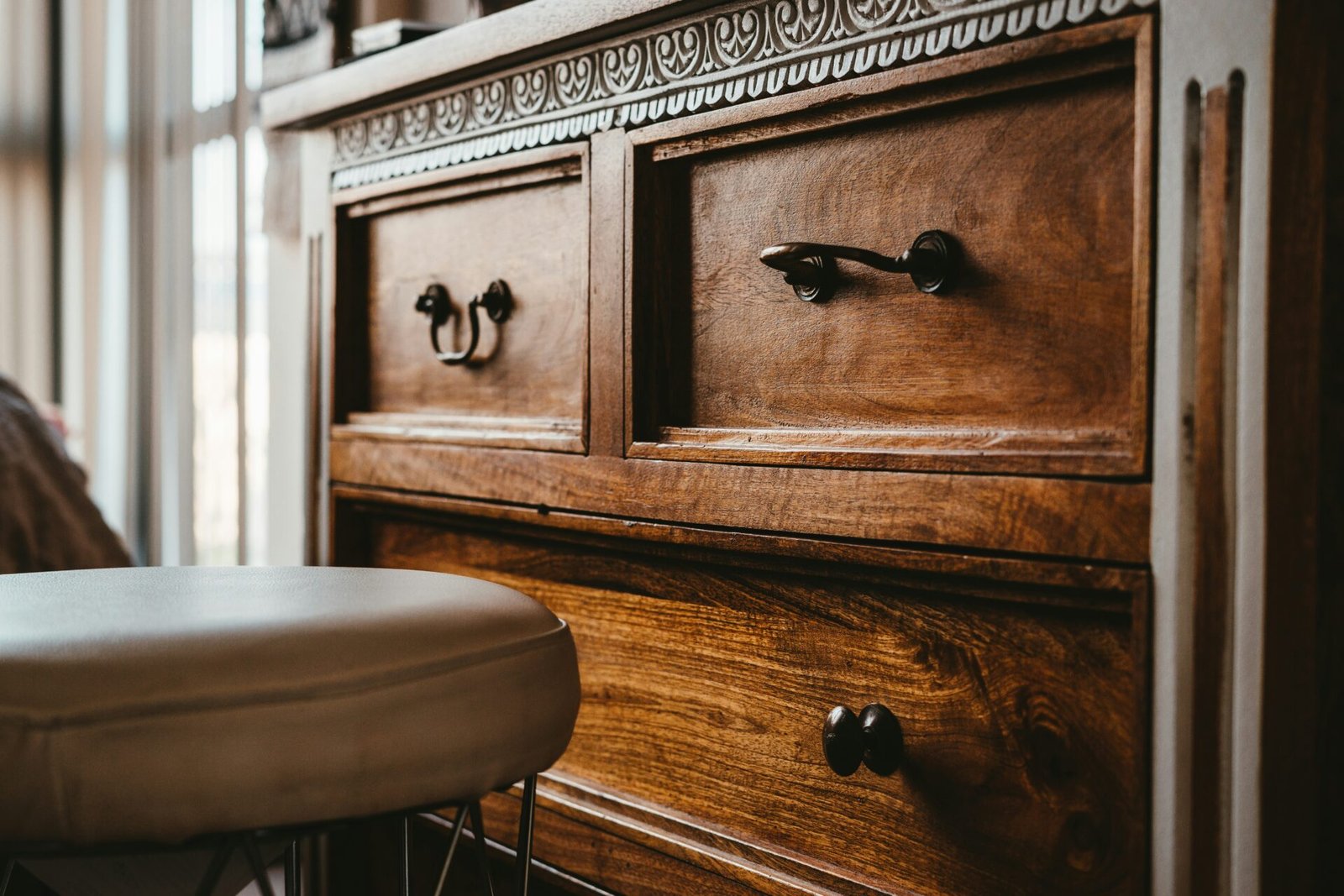what is an hVLP paint sprayer?
The HVLP paint sprayer was invented in the early 1950s, but it wasn’t until the 1960s that any significant developments were made. This machine is a variant of the air atomizing type and sprays different types of liquids such as paint and finishes onto walls, woodwork, and furniture. Within this article, you will find out how an HVLP paint sprayer works and the different types available.
HVLP meaning
High Volume Low Pressure (HVLP) – this term may sound complicated but it’s actually pretty simple. Instead of having a high pressure like most types of sprayers, the idea behind the HVLP paint sprayer is that it uses a lower pressure. By reducing the pressure, you reduce overspray and obtain a smoother finish to your work.
How does an HVLP paint sprayer work?
An HVLP (High Volume Low Pressure) paint sprayer works by using a high volume of air to atomize the paint and then uses a low-pressure air stream to propel the paint particles onto the surface to be painted. This method of atomization allows for much less overspray and material waste than traditional airless or compressor-based sprayers.

The basic components of an HVLP sprayer include a turbine, a spray gun, and a hose that connects the two. The turbine pulls in air from the surrounding area and uses it to power the spray gun. The paint is typically stored in a cup or reservoir on the spray gun and is pulled into the gun by the air stream created by the turbine.
When you pull the trigger on the spray gun, it opens a valve that allows the paint to flow from the cup or reservoir, into the spray gun. At the same time, the turbine starts blowing a high volume of air, which atomizes the paint into tiny droplets. The droplets are then propelled onto the surface to be painted by the low-pressure air stream created by the turbine.
The main advantage of an HVLP paint sprayer is its low overspray which means less paint is wasted and it is more controlled, so it’s ideal for interior work or work where precision is needed. Also, It is great for projects that need a smooth finish, or for working with materials that require a high degree of atomization such as lacquers, varnishes, and other thin viscosity liquids.
It’s also important to note that because HVLP uses less pressure than traditional sprayers, it can be less tiring to hold and control, which makes it easier to use for extended periods of time.
What is a HVLP spray gun used for
HVLP Spray gun is used for spraying lacquer and paint on a variety of substrates, including cars, woodwork, and metalwork. It is equipped with a turbine which creates an ideal air-flow pattern that prevents the paint from drying and clogging.
The HVLP gun is lightweight and very comfortable to hold and use. It comes with an adjustable viscosity knob that allows you to adjust the paint flow according to the job at hand.
The knob also comes with a lock-down button to avoid accidental adjustment while using the gun. It is made of high-quality materials and its nozzle is scratch-resistant and durable.
The nozzle is replaceable and can be used for a long time without any performance issues. The gun also features ergonomic non-slip handles that allow you to comfortably grip it at all times.
What is the difference between HVLP and conventional spray guns?
Spraying paint with a traditional spray gun is an arduous task that requires constant cleaning to prevent overspray. Since the spray gun dispenses paint by using high-pressure air, it can be difficult to control the amount of paint that comes out.
HVLP guns are specifically designed for fine finishes and produce much less overspray. This makes them ideal for use in an industrial setting where cleanliness is a top priority.
The difference between HVLP and conventional spray guns is one of paint quality and cleanliness. The fine mist produced by an HVLP gun gives a smoother finish with less over-spray than conventional spray guns, which can result in drips and runs.
This is because the compressor for conventional spray guns usually blows air at 400 to 500 mph, as opposed to an HVLP’s 30 to 100 mph.
Advantages of HVLP spray gun:
These are the 5 advantages of the HVLP Spray gun.
- The atomized paint makes for a higher-quality finish.
- The lower operating pressure means you are less likely to damage the substrate being painted.
- You can reduce or even eliminate sanding and filling as the HVLP Spray gun does not leave an orange peel texture on the surface.
- VOC (Volatile organic compound) emission is reduced to a minimum.
- The paint will require fewer coats, resulting in lower material costs and less time spent on painting.
Disadvantages of HVLP spray gun:
These are the 5 disadvantages of the HVLP spray guns.
- The high cost of the equipment and maintenance is a factor.
- It requires clean air and water due to its lower operating pressure and quality finish.
- The HVLP Spray gun is not able to atomize all paints, for example, water-based paints; it will require thinning, which will cause an increase in material costs.
- The HVLP Spray gun is not very effective in large areas, it is more suitable for smaller workspaces.
- It can cause back-drips on vertical surfaces due to gravity unless the paint is properly atomized before being fed into the air supply.
HVLP vs airless
Spray gun, which one you should choose? Is airless better than HVLP or vise versa? Well, it depends on your needs. The advantages of an airless spray are speed and high volume output. On the other hand, the advantage of HVLP is its quality finish due to the atomization of paint which reduces or even eliminates the need to sand and fill the substrate.
Here is one thing for sure: If you want a quality finish, an HVLP spray gun will be your best choice while if you want high volume output and speed of spraying, an airless paint sprayer will be your only option.
5 key Factors between HVLP vs Airless Paint Sprayer
These are the 5 key factors:
1. Volume Output:
An airless paint sprayer has a greater volume output than an HVLP Spray gun. Airless paint sprayers can spray up to 5 gallons per hour and around 3 gallons per hour with handheld models, while the HVLP Spray gun only averages 1 gallon per hour. The reason for this is that you don’t need to gravity feed the paint with an HVLP Spray gun, so it takes much less time to cover the same area.
2. Cost:
An airless sprayer, including its components and accessories, is much cheaper than an HVLP spray gun. Also, the maintenance costs are much lower; you only need to replace the filters occasionally and not clean them as frequently as needed for an HVLP Spray gun.
3. Accuracy:
If you need accuracy in your work, you should go for an HVLP Spray gun because of its high atomization ability resulting in a higher quality finish; it also features adjustable control overflow rate.
On the other hand, if you don’t care about that sort of thing and just want to speed up the process without any special attention to detail, an airless paint sprayer will do the job just fine because you won’t be able to notice any difference in finish.
4. Cleaning:
If you use water-based paints and thinners and only clean the gun with water, both types of spray guns are easy to clean; however, if you use oil-based paints or solvents such as lacquer thinner or acetone, you should always buy an HVLP Spray gun as it has fewer components than an airless spray gun and is easier to disassemble and clean after each use.
On the other hand, an airless paint sprayer has more parts that require cleaning which can be a pain in the butt.
5. Complexity:
If you have some experience spraying, an airless sprayer will seem very easy to use as it has fewer parts and is adaptable with all types of nozzles that help control the spray patterns. On the other hand, an HVLP Spray gun takes more time to set up and learn how to operate correctly but offers better quality finishes due to its variable fan control which provides adjustable control over flow rate preventing splattering.
It also includes several different types of nozzles depending on your needs; for example, if you need paint thinners or water-soluble paints thinned out, the tips are available for this exact purpose. So now that I’ve described paints, a water-soluble tip should be used.
Conclusion:
So, the answer to your question is that if you want speed and high volume output with less material cost and low maintenance costs, an airless paint sprayer will be the best choice for you. On the other hand, if you need accuracy in your work or have some experience with painting and require a variable fan control with different types of nozzles, you should go for an HVLP Spray gun.
One thing is for sure: Both paint sprayers are better than brushing or rolling paint on by hand as they provide a much more smooth and even finish without brush marks.
I hope this article was helpful.
Let me know if you have any questions or comments!
Thank you for reading my article! I hope you enjoyed it and found it valuable! Please, share it with your friends if you liked it to help get the information out there! Thanks again and happy painting!




